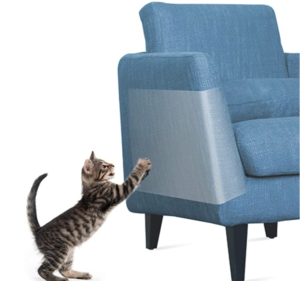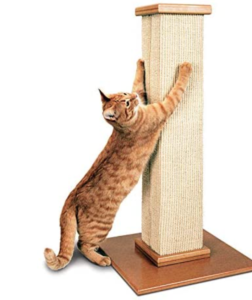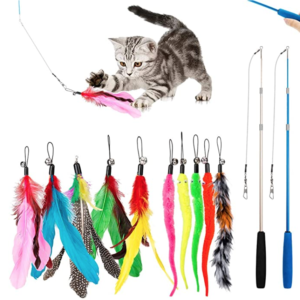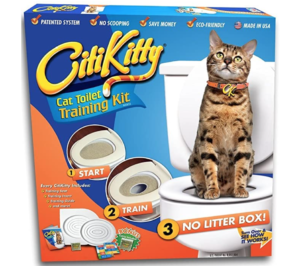Contrary to popular belief, you can train your cat. Most people believe that it is only dogs who can be taught proper behaviour and tricks, but cats are more than capable of learning how to understand you. Training your cat is a bit different though. Experts agree that cats are considerably less domesticated than dogs, cats don’t have the same need to please and socialise with people. This makes training them a little harder and a bit different. However, it is still very accomplishable. Training your cat can be a rewarding experience as your bond with your new pet.
 You can train your cat to do a variety of things. For most cat owners, this starts with the litter box. Most cats are trained on how to use their litter box, but it doesn’t have to stop there. You can also train a cat to not bite or play too rough, to stop scratching you or your furniture, and even to iron out specific naughty habits that your cat has picked up.
You can train your cat to do a variety of things. For most cat owners, this starts with the litter box. Most cats are trained on how to use their litter box, but it doesn’t have to stop there. You can also train a cat to not bite or play too rough, to stop scratching you or your furniture, and even to iron out specific naughty habits that your cat has picked up.
Training a cat involves different methods than training a dog, but a lot of the same principles. In essence, you’re still trying to reward them for behaviour that you want. You’re trying to use your resources to reward good behaviour and convince the cat that it is worth their while to behave like that all of the time. Once you understand the basic methods of teaching a cat something, you can apply it to all sorts of behaviour.
Basics of Training Your Cat
The first thing to be aware of when training your cat is that cats don’t really understand punishment. Your cat won’t understand that they’re being punished for something that they did, they’ll probably just think it is arbitrary. Punishment won’t incentivise the cat to not do something, it might just make them sneakier. Instead, they respond a lot better to positive reinforcement. You should reward your cat for good behaviour and incentivise this, rather than punishing bad behaviour.

View on Amazon
It’s important to keep your training in an environment that is suitable for your cat. Cats dislike being stared at, sudden noises, and sudden movements. This means you shouldn’t spend your time training your cat while staring at it. It can be tempting to keep an eye on them, ready to treat them for good behaviour. However, you should let them feel relaxed. You should also do your training during a time when they won’t be distracted by too many noises or sudden movements. If you keep these factors in mind, you should have an atmosphere that is productive for training your cat. Your aim is to keep relaxed and happy.
The important thing is to reinforce good behaviour. This means repeatedly rewarding their good behaviour until it becomes routine. Reinforcing good behaviour only a few times will not help your cat learn what you want it to do. Every time your cat does the thing you’re trying to encourage, you should make a big fuss out of the accomplishment. The reward can be treats or just affection. It is good to mix and match these rewards. That way the cat is incentivised to get a treat, but also understands that it won’t get a treat every time.
Training Your Cat to Play Nice
A common complaint from cat owners is related to play. Cats have sharp claws and don’t seem to be aware that you have soft and easily damaged skin. This can become a big problem for cat owners. As well as hurting you, scratching or playing in a way that’s damaging can cause damage to your house and furniture. Training your cat to avoid this sort of play can be really beneficial in the long-run.

View on Amazon
The first step in stopping this is to ensure you have a scratching post for your cat. Scratching posts and other toys are a great way to keep cats entertained, but they’re also a fantastic way to redirect their energy. If your cat is scratching you or your furniture, then you need to teach them what is appropriate to scratch. You can’t train your cat not to scratch at all, but you can direct them to something it is okay to scratch.

View on Amazon
Whenever your cat begins to scratch you or play too rough, you should calmly bring them over to their scratching post and engage them in play for a few minutes. This will give them encouragement as they enjoy you being involved in playing. It also teaches them which area or object is oaky to play with. If your cat is using the scratching post without being lead over to it, you should reward this with a treat or some attention. This should help you build positive reinforcement for using the scratching post. Within a little while, your cat will prefer to play with the scratching post than your furniture or leg as they associate it with a reward. This process can take some time but with enough repetition, eventually, your cat will understand.
Training Your Cat Not to Bite
Cats like to bite. Much like scratching, this is a behaviour that is perfectly natural for your kitten but one that you probably don’t like. You can train your cat to avoid biting. It is not always possible to avoid every type of biting, sometimes biting comes for a weird reason. However, you can definitely train a cat what is an appropriate level of play and that biting goes too far.
It is again important not to scold your kitten for biting, just calmly say no. Getting angry when your kitten goes too far with playing won’t teach them how to play properly. Even worse, they might begin to think being told off is just part of playing. This can make it difficult to ever communicate to your cat that they’ve annoyed you in some way. Instead, you should train your kitten to avoid biting by redirecting this energy and play into an appropriate form.

View on Amazon
Whenever play escalates into biting, you should end the playing session right then and there. Make it clear to your cat that biting isn’t part of playing. Instead, it is behaviour that will immediately end the playing. Don’t pull your hand away. This is the natural reaction, but it is actually naturally engaging what kittens view as play. It turns your hand into the mouse on a string that kittens love to chase. This might be a natural response to pain but it will only encourage your cat to bite. You should redirect their playing towards using toys that are safe to chase. Reward your cat for using prey toys for playing instead of your hand. With repetition, they will gradually learn what is and isn’t okay.
Litter Training Your Cat
Training your cat to use their litter box is often the only training a cat goes through. Many kittens will arrive at home already knowing the ins and outs of the litter box. They will have witnessed their parents or siblings using the box and quickly learnt what the area is for. However, some pet owners aren’t so lucky. Sometimes the cat you’ve brought home will have no idea what that mysterious box is for or why they can’t go wherever they like. In that case, you need to litter train your cat.

View on Amazon
Cats will naturally want to sniff and bury their own waste. This sort of behaviour makes the set up of your litter box a natural place for your cats to go. Because of this, you will have an easier time training your cat to use the litter box as it already appeals to them. Immediately after eating you should pick up your cat and place them in their litter box. This box should be far away from their food. Once in the box, you can use your finger to dig in the box to demonstrate digging for your cat. You might then want to wash your hands. After seeing this, they should pick up that this space is somewhere they can bury things. After realising that, they should put two and two together and realise it’s a prime candidate for a new toilet.
Repeating these simple steps should be enough encouragement to teach your cat about what the litter box is and why it is recommended as a toilet. If this doesn’t seem to be taking, then you might need to look at what your cat is using as a litter box. You can remove things like house plants that might distract them. You need to make sure you’re using the right litter box too. With alternatives taken away, they should start using the box you have directed them to.

View on Amazon
Clicker Training
Clicker Training is a relatively new method for training your cat but it can have great results. It can be used for dogs as well as cats and provides an alternative way to encourage good behaviour. This method can help you stop all sorts of unwanted behaviour, like climbing on kitchen surfaces or crawling up curtains. To do this you will need treats and a clicker device or app.

View on Amazon
The first thing you need to do is establish a link between the noise that the clicker makes and a treat or reward for your cat. You do this by clicking the clicker and then rewarding your cat. Your cat should pretty quickly pick up that the noise equals treat or fuss. Once they’ve learnt this connection, you can start using it to influence their behaviour. After this link is established you can start using the clicker noise to stop unwanted behaviours. Training your cat to stop climbing on tables or jumping at things is simple with this method.
Once you cat begins one of these unwanted behaviours, you should use your clicker to get the cat to stop. Upon hearing the clicker, they should stop what they’re doing and come over to you. Once they are rewarded for stopping you can point them towards more desirable activities. Doing this should gradually build up an association for your cat. Not doing that particular thing gives them a reward. This is much more effective than trying to punish them for bad behaviour.
Training Your Cat
Training your cat will take some time and effort. With clicker training, you can even begin to teach them tricks. However, it can also be helpful for cat owners who just want to iron out destructive behaviours. If you follow these instructions, you should be able to have your cat behaving just as you want without too much hassle. The important thing to keep in mind is that all training takes time, nothing will be accomplished overnight.
Try not to put too much pressure on your cat. Attempting to train them in a stressful environment will make it much harder for them to learn. They will pick up on the tension and the new behaviour won’t be internalised as well while they’re uncomfortable or under too much pressure. Training should be done using trust and respect. You’re aiming to effectively communicate with your cat and teach them what you want them to do, not scold them into complying. As long as you focus on their happiness and comfort while training, everything should go smoothly.

View on Amazon









